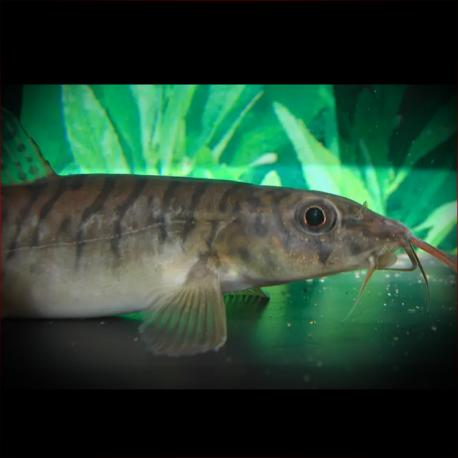More info
Datasheet
| Minimum Tank Size | 120 litres / 31.70 US gallons |
| Maximum Size | 15.6cm / 6.14inches |
| Temperature | 20°C / 68.00°F - 24°C / 75.20°F |
| Hardness | 2.02dgH / 36ppm - 12.05dgH / 215ppm |
| pH | 6.5-7.5 |
General Description
Acanthocobitis Pavonacea, commonly known as the Peacock Loach, is not frequently seen in the aquarium trade but may occasionally be encountered in shipments of wild-caught fish from northeast India. The species is sometimes marketed as the "panther" or "puma" loach. It belongs to the family Nemacheilidae and is classified under the Cypriniformes order. With a maximum size of approximately 15.6cm, the Peacock Loach has distinct features such as possessing 9-18½ branched dorsal-fin rays and a color pattern that includes an ocellus at the upper base of the caudal fin.
Aquarium Setup
To ensure suitable conditions for the Peacock Loach in captivity, it is recommended to provide a well-maintained tank with ample hiding spots. While this species is unlikely to harm delicate plants, setting up the aquarium to mimic a slow-moving section of a stream or river is advisable. This can be achieved by incorporating a sandy substrate, water-worn boulders, driftwood, and dried leaves like beech or Indian Almond leaves. Adaptable plants such as Microsorum, Bolbitis, or Anubias spp. can be added to the decor, with bright lighting encouraging aufwuchs growth. Although it does not necessitate high water movement, a mature hill stream-type setup with a rocky aquascape can also be suitable.
Behaviour
Reports of captive Peacock Loaches suggest that they are bold but not aggressive. It is recommended to avoid tankmates significantly smaller than the Peacock Loach. Fish of similar size found in the natural habitats of the Peacock Loach, such as cyprinids and loaches, are considered compatible companions. The species might be housed in groups in a sufficiently sized tank, although definitive confirmation on group dynamics in captivity is yet to be confirmed.
Feeding and Diet
Peacock Loaches are presumed to prey on insect larvae and similar organisms in their natural habitat. In captivity, they readily accept sinking dried foods but should also be offered small live and frozen foods like Daphnia, Artemia, and bloodworms to ensure a balanced diet. Varied nutritional offerings are essential for maintaining the health and well-being of the Peacock Loach.
Reproduction & Dimorphism
Successful breeding of the Peacock Loach in aquarium settings is rare, with instances of fry appearing in larger, mature setups. Males can be differentiated from females by the presence of an enlarged suborbital flap, with adult males typically appearing slimmer than females. Limited data exists on the reproductive behavior of this species, although successful breeding methods for related species may provide insights for future breeding attempts.
Habitat and Distribution
The Peacock Loach is native to the Brahmaputra River drainage in Assam State, northeastern India, and may also be found in the neighboring state of West Bengal. Its distribution is primarily restricted to the Brahmaputra and Ganges river basins in northern India and Bangladesh. Detailed information on the natural habitat preferences of the Peacock Loach remains sparse, limiting comprehensive insights into its ecological niche and behavior in the wild.

